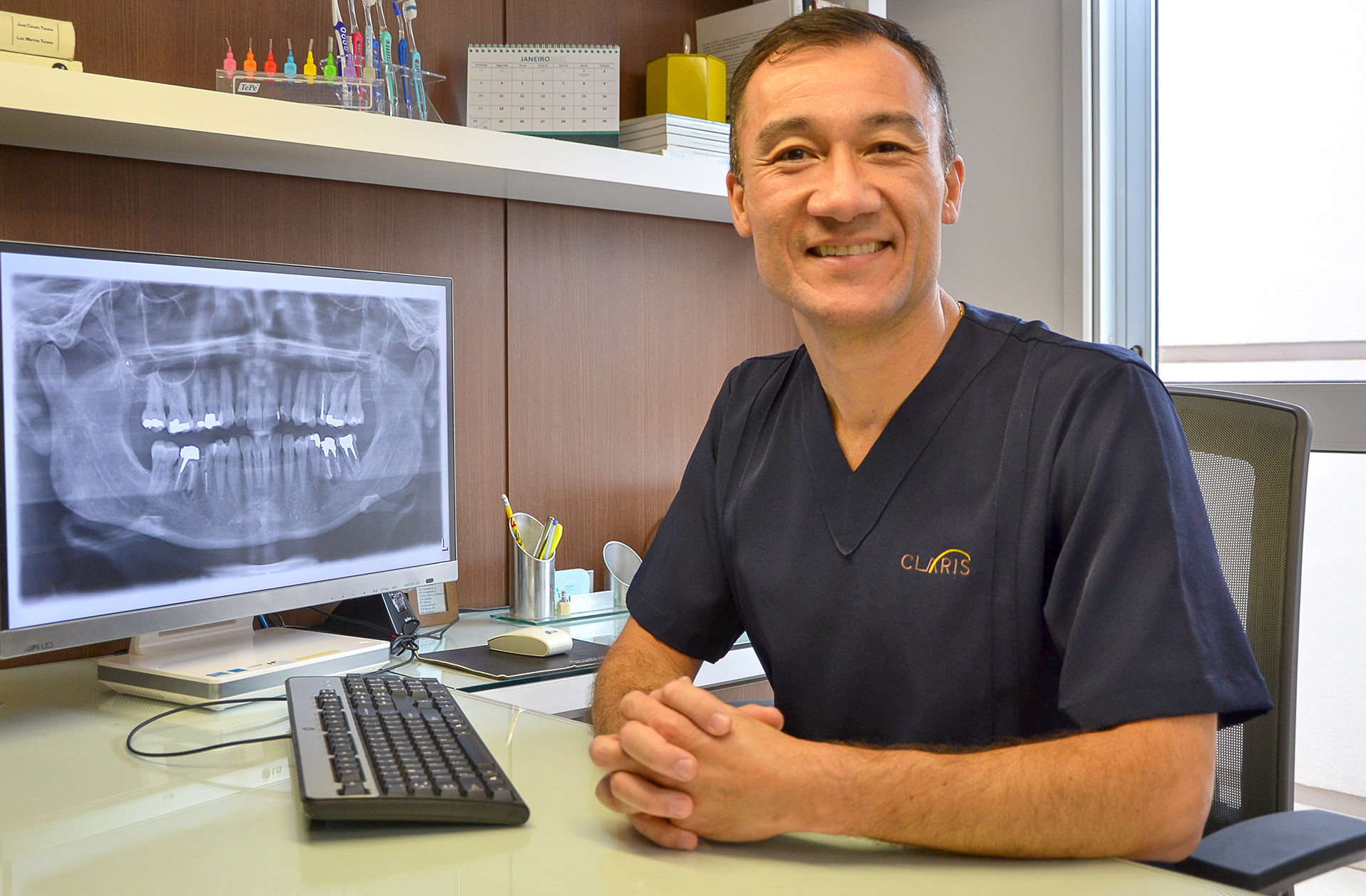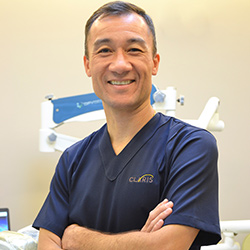Specialties
ENDODONTICS

BRING YOUR TRUE SMILE BACK TO LIFE
Endodontic treatments performed at Claris Oral Rehabilitation use high-end materials and stateof-the-art equipment to better serve its patients and provide them with more comfort and safety in the treatment.
The various modalities in which endodontic treatments can be performed depend on the stage in which the tooth (pulp) is when the patient first comes in to initiate the treatment. Each stage requires a specific type of treatment.
So that the diagnosis of pulp alterations (“tooth nerve”) is assessed accurately, some factors must be observed: age of the patient, radiographic examination, types of triggers of pain, presence of inflammation or pus, the area of the affected tooth, presence of previous restoration or prosthetic crowns, type of occlusion of the patient and other important characteristics. An accurate diagnosis is crucial for choosing the type of endodontic treatment to be performed.
TREATMENTS
- Apical surgery
Root cutting via gingival surgery for removal of the compromised area. This mode is used when the Endodontic treatment cannot be performed by standard means (occlusal region of the tooth – upper tooth face), resulting from the presence of pins and crowns. Another indication of this modality is the presence of cysts in the apical (root) region of the teeth.
- Endodontic Retreatment
Replacement of treatment already performed. An endodontically treated tooth may have problems when a previous treatment was performed incorrectly or when, for some reason, the tooth had not been rehabilitated (restoration) properly. Endodontic treatment is not indicative that this same tooth cannot undergo a new intervention in the root canal treatment.
- Conservative Treatment
Treatment carried out preserving the pulp vitality (“tooth nerve”). This mode may occur due to cervical exposure of teeth (exposed root), causing discomfort and pain in response to outer stimuli such as cold, hot, acidic substances, sweets, etc. This pain is usually quick and it normally presents itself only at the moment when the tooth is exposed to those external stimuli.
- Treatment of Snoring and Sleep Apnea
Whoever has this type of sleep disorder, in addition to having impaired sleep, waking up irritated, feeling tired and drowsy throughout the day, can also develop, in the long term, more serious conditions such as hypertension, heart attack and stroke. But what you may not know is that there are specific exams for diagnosing the severity of snoring and apnea and, depending on the result, an Intraoral Device may be indicated as treatment. These devices used for sleeping are constructed in such a way as to position the mandible more forward, allowing more air to flow through a clearer passage in the throat.
- Endodontic Treatment
Total pulp removal. This mode is used when alleviating the pain is no longer manageable. Usually the pain is sharp, pulsatile and it can be triggered by either hot or cold stimuli. Or sometimes the pain is steadily severe with no outer triggers. The pain may be reduced when pain killers or anti-inflammatory medications are taken, but as soon as the effect of the medication phases out, the onset of severe pain resumes.
SPECIALIST

Dr. Rodrigo Vance (License CRO 68453)
Specialist and Master’s in Endodontics
- SPECIALIST IN ENDODONTICS FROM THE UNIVERSITY OF TAUBATE (2003)
- CERTIFIED WITH THE ROTATORY SYSTEM (2003)
- CERTIFIED IN SINGLE SESSION ENDODONTICS (2003)
- MASTER’S IN ENDODONTICS FROM THE UNIVERSITY OF TAUBATE (2006)
- LICENSURE IN MICROSCOPIC
- SURGICAL INTERVENTIONS (2012)
- PROFESSOR IN THE SPECIALIZATION COURSE IN ENDODONTICS AT NEPO/FUNVIC
- PROFESSOR IN THE SPECIALIZATION COURSE IN ENDODONTICS AT THE SALES/FACOP INSTITUTE













